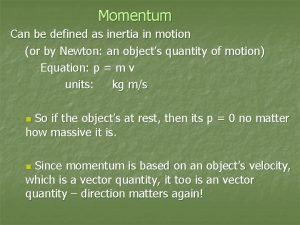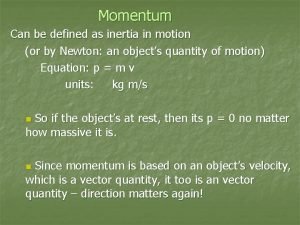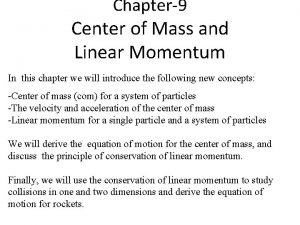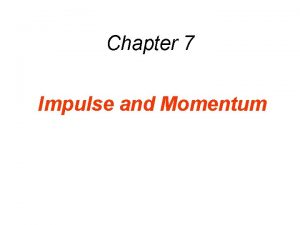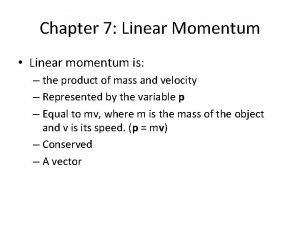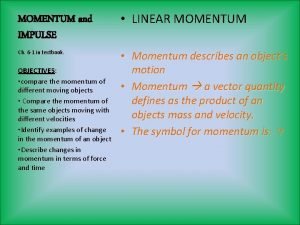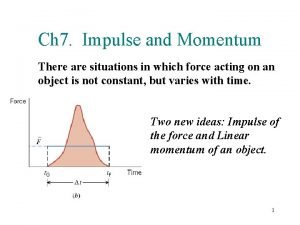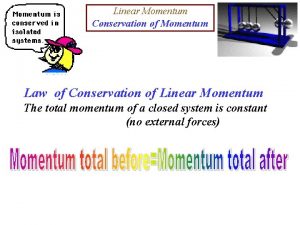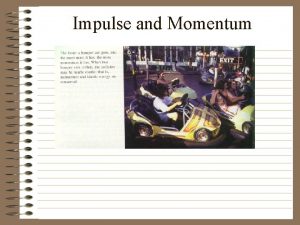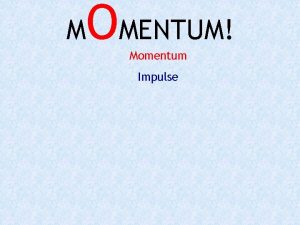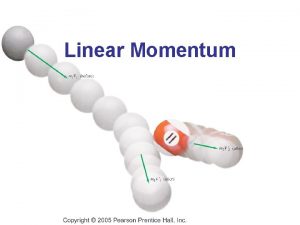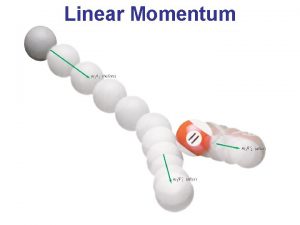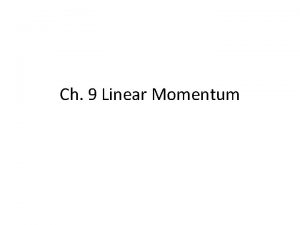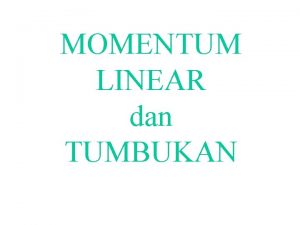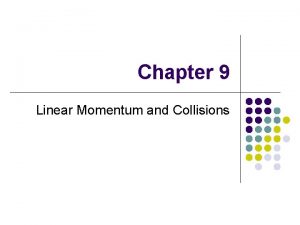MOMENTUM DEFINITIONS Linear momentum p is defined as

















- Slides: 17

MOMENTUM

DEFINITIONS • Linear momentum (p) is defined as the product of mass (m) and velocity (v): p=mxv • SI-unit of momentum is 1 kg∙m∙s-1, alternative unit 1 N∙s can also be used • The change of linear momentum is called the impulse: Δp = F x Δt

LAWS OF MOMENTUM • Newton’s second law states, that the resultant force is proportional to the rate of change of momentum: F=(final momentum – initial momentum)/time taken F = Δp/Δt

CONSERVATION OF MOMENTUM • The law of conservation of linear momentum states that the total linear momentum of a system of interacting particles (bodies) remains constant provided there is no resultant external force

COLLISIONS • Collision in witch no mechanical energy is lost called elastic collision • If large amount of energy is lost (as heat or/and sound), but the total momentum is still conserved, the collision called totally inelastic collision. • Inelastic collision, in contrast to an elastic collision, is a collision in which kinetic energy is not conserved.

ELASTIC COLLISION (m. A=m. B) v m. A m. B v=0 v m. A m. B

TOTALLY INELASTIC COLLISION (m. A=m. B) v m. A m. B v/2 m. A m. B

INELASTIC COLLISION v 01 m. A m. B p 01 + p 02 = p 1 + p 2 v 1 m. A v 2 m. B AND K 01 + K 02 = K 1 + K 2 K=1/2 mv 2 (KINETIC ENERGY)

FORCE ON GRAPH Force/ N F Δp = F x Δt time/ s t 1 t 2

SAMPLES

Sample No 1

Sample No 2

Sample No 3

Sample No 4

Sample No 5 (1/3)

Sample No 5 (2/3)

Sample No 5 (3/3)
 Linear impulse equation
Linear impulse equation A collection of well-defined objects
A collection of well-defined objects Momentum can be defined as
Momentum can be defined as Momentum can be defined as
Momentum can be defined as Conceptual physics chapter 6 momentum
Conceptual physics chapter 6 momentum Kekekalan momentum linear
Kekekalan momentum linear Principle of linear impulse and momentum
Principle of linear impulse and momentum Angular momentum of disc
Angular momentum of disc Center of mass and linear momentum
Center of mass and linear momentum Momentum linear adalah
Momentum linear adalah Impulse momentum theorem definition
Impulse momentum theorem definition Whats linear momentum
Whats linear momentum A 2250 kg car traveling to the west slows down
A 2250 kg car traveling to the west slows down Linear momentum
Linear momentum Perfect inelastic collision
Perfect inelastic collision When is momentum conserved
When is momentum conserved Conservation of linear momentum
Conservation of linear momentum Law of conservation of linear momentum
Law of conservation of linear momentum


